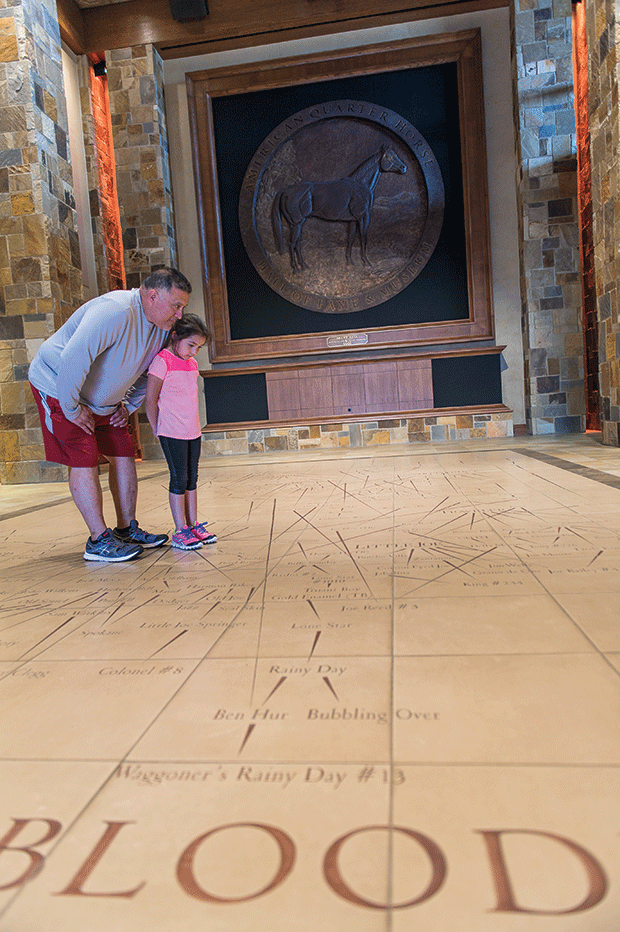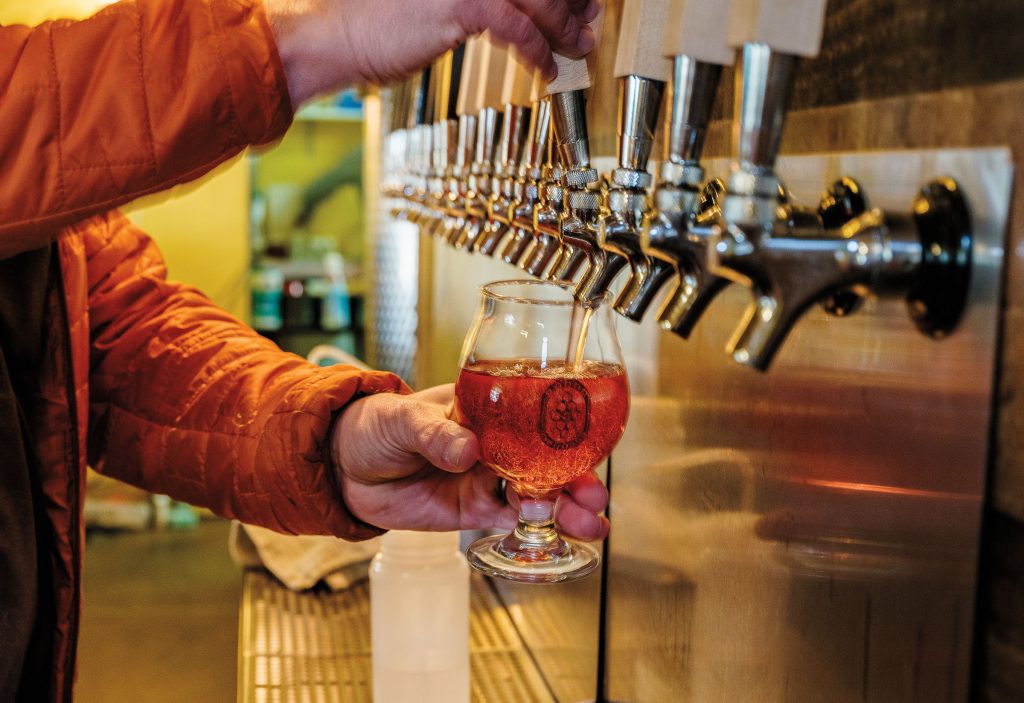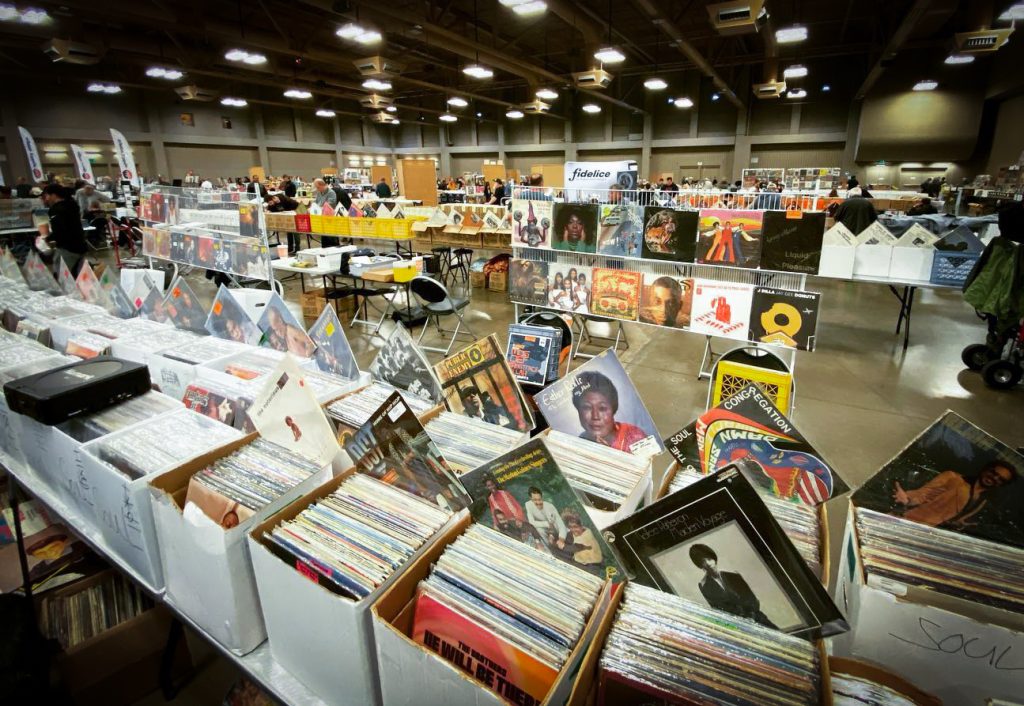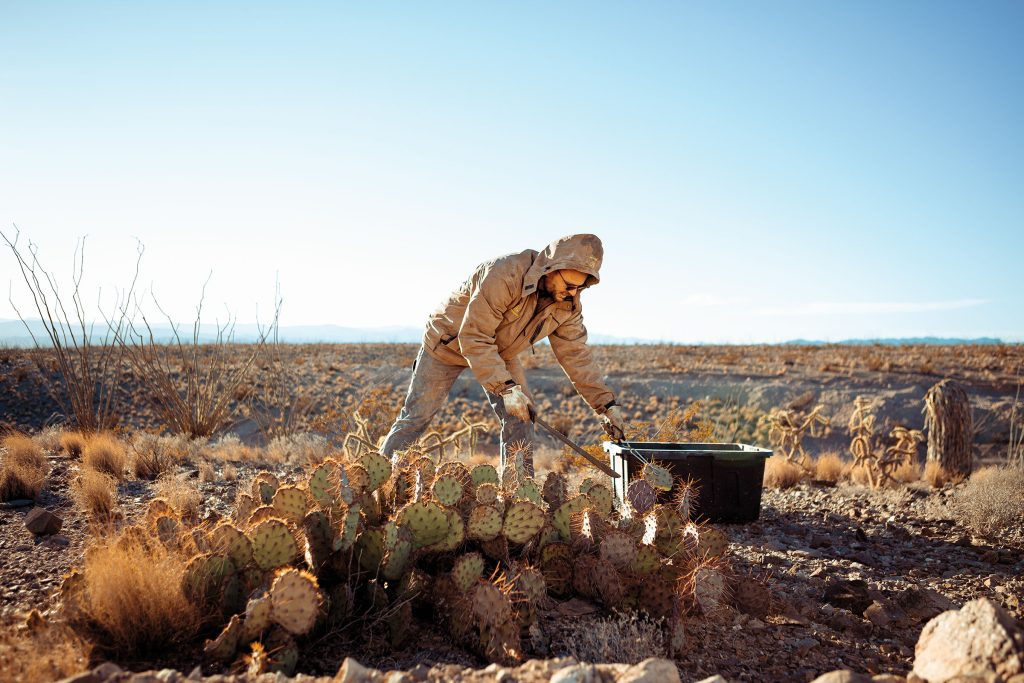
The museum’s Grand Hall features a floor diagram of quarter-horse heritage and a 13-foot bas-relief medallion of a quarter horse.
The American Quarter Horse Hall of Fame & Museum, located at 2601 E. I-40 in Amarillo, opens Mon-Sat 9-5. Entry costs $7 for adults, $6 for seniors, and $3 for children ages 6-18. Call 806/376-5181.
In the colonial era, Americans used their horses for work during the week and play on the weekends, racing them in impromptu short-distance races—the competitive sport of the times. The sturdiest and fastest horses were the most desirable, leading to the development of the American Quarter Horse—a breed named for its speed on the quarter-mile track. Westward expansion in the 1800s and the establishment of gi-ant Texas ranches like the Four Sixes and the King Ranch furthered the breed’s development.
The American Quarter Horse Hall of Fame & Museum explores the past and present of the breed with sophisticated exhibits, video kiosks, a children’s section, and a new phone app that replaced audio handsets for self-guided tours. Ranchers, racers, breeders, and recreational riders value quarter horses for their versatility as short-distance sprinters, rodeo and show competitors, trail riders, and working horses. The American Quarter Horse Association, whose foundation operates the museum, is the largest single-breed registry for quarter horses, with 250,000 members and more than 5 million registered horses.
The museum’s 10-minute introductory video gives a thumbnail sketch of the breed and features such scenes as a ranch girl riding, exercising, feeding, and grooming her own quarter horse. When my wife Eileen was a girl in Wichita Falls, she had blonde pigtails and a palomino named “Blondie,” likely from quarter horse stock. She hasn’t been in a saddle in decades, but she related to the museum’s displays. “There is a connection at an early age with a horse,” says our guide, Melissa Loftin, the museum’s community outreach liaison.
On the plaza in front of the museum, outdoor panels depict a herd of horses on the run, complemented by bronze sculptures of racing horses and a cowboy working cattle. Inside the museum’s entry, the Dogwood statue interprets a 1968 painting by the late Orren Mixer, who was commissioned by the American Quarter Horse Association to depict an “ideal” quarter horse—muscular yet accessible.
Moving beyond the ticket counter, we encounter a jaw-dropping 13-foot bronze bas-relief medallion on the far wall of the Grand Hall. Fashioned from a 1,400-pound clay mold and framed by massive stone columns, it too is inspired by Mixer’s ideal horse. The Grand Hall’s floor contains another surprise, an engraved “family tree” of quarter-horse bloodlines, starting with the origin of the breed in North America in the early 1700s. Along the walls are plaques commemorating the 110 horses and 164 people inducted into the Hall of Fame since its founding in 1982. Orren Mixer is one of them.
So is the late Joe Kirk Fulton, Texas Tech’s first official Masked Rider, who led the Red Raider football team onto the field on horseback for the first time at the 1954 Gator Bowl. Though the pedigree of Fulton’s first mount is uncertain, its successors included quarter horses like Midnight Matador, the longest serving horse. Fulton became more widely known as an owner, competitor, and breeder of quarter horses, and the cowboys on his ranch also rode them.
Other inductees include Baby Doll Combs, the diminutive champion mare who may have known more about calf-roping than her riders. Cowboys wept at Baby Doll’s funeral in 1960. And there’s Helen Michaelis, who ran a stable in college and oversaw American Quarter Horse Association operations from her Eagle Pass ranch in the 1940s. She died in 1965 and became the first woman inducted into the Hall in 1985.
The stories of the Hall of Fame members—whether two-legged or four—come alive on the museum’s second floor. The exhibits describe horses like First Down Dash, whose progeny won the most money of his peers in his lifetime. His 2010 passing at age 26 was preceded by the death of his owner, Frank “Scoop” Vessels III, in a plane crash. “He lay down and went to sleep peacefully. He was missing Scoop and
his sunflower seeds,” said Vessels’ widow, Bonnie.
Then, there is the equestrian cham-pion Rugged Lark, a stallion that proved quarter horses could triumph as show horses in aristocratic competitions, which have strict protocols for jumping and various obedience and control exercises known as “dressage.” Rugged Lark even wore tuxedo garb in some of his photos.
Also on the upper floor are artifacts like a full-size chuck wagon, saddles, stirrups, and boots. The displays represent a fraction of the 60,000 items held in the museum’s archives. Exhibits of colorful racing silks worn by jockeys and an actual starting gate for quarter horse races are reminders of the All American Futurity, the annual race run on Labor Day in Ruidoso, New Mexico, with purses approaching $3 million. The quarter-mile race is over in 21 seconds.
The American Quarter Horse Hall of Fame & Museum caters to children with a coloring table, a manikin veterinarian, Two Bits the talking horse, and an interactive X-ray of a quarter horse’s physique. The museum also provides free tokens for children to ride Lucky Star, a mechanical pony; on July 23, National Day of the Cowboy, free rides on real horses will be available as part of a daylong celebration.
So why take Exit 72a off Interstate 40 and turn north to Quarter Horse Drive during a trip through the Texas Panhandle? “No doubt you will see cattle and horses as you drive down the road,” Loftin says. “Why not stop in and learn more about the horse that settled the West?”








